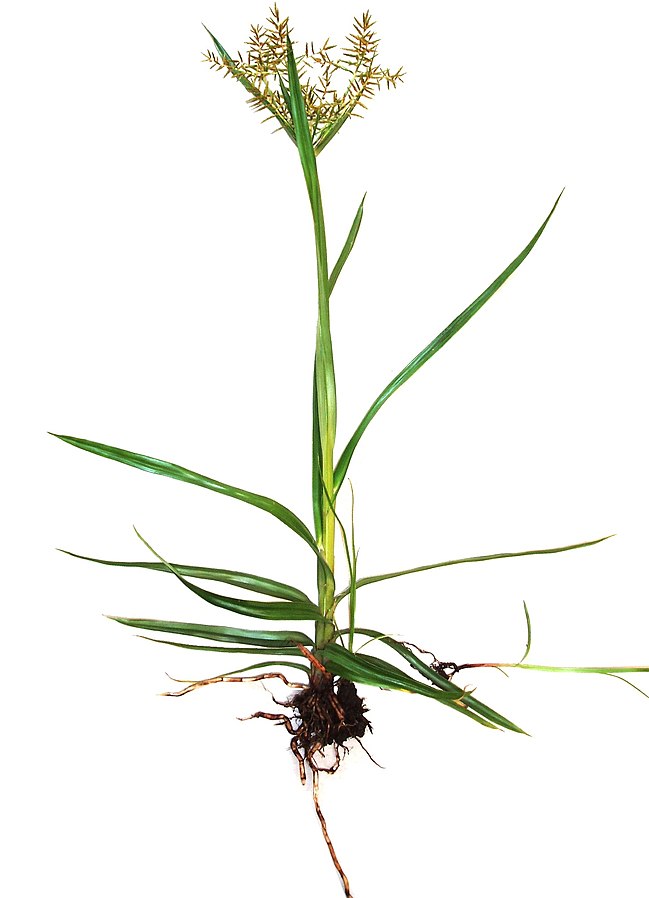Yellow Nutsedge

Yellow Nutsedge
(Cyperus esculentus)
Priority: - Contain / Annual Control
Tags: Agricultural | Terrestrial
Identification and Reproduction
Identification:
- Yellow nutsedge grows a single stem from a tuber root up to 90 cm tall.
- Stems are triangular and give rise to thin leaves.
- Leaves are shiny and yellow to green with a distinct mid-vein to a pointed tip. Their appearance resembles grass.
- Flowers are found in the form of a terminal spikelet. They are golden brown or straw coloured and grow from the central stem. The floral spikelets grow perpendicular to the flowerstalk with spikes narrow, linear and flat.
- Its blooming period occurs through mid-summer to early fall.
Reproduction:
- Its tubers and roots become intertwined and layered within the soil. Tuber can remain viable in the soil for 4 years and can regenerate new plants.
- Because of its layered root system this plant is very difficult to completely remove after it has established.
- Patches can extend and grow a metre a year.
- Also reproduce by seeds which are easily dispersed by agricultural activities, soil transportation, water and wind.
Habitat & Ecology
- Known as a quick colonizer and can take advantage of recently disturbed sites.
- It prefers moist or wet soils and is often found growing in muddy or shallow waters.
- It is commonly found in wet fields, irrigated cropfields, riverbanks, roadsides and ditches.
- Currently found on all continents except Antarctica and has been observed as far north as Alaska.
Impacts
Social:
- A common crop contaminant, it is a common weed of potato and soybean crops.
- Reduces light, water and nutrient availability for agricultural crops.
Ecological:
- Can grow into a dense monocultural.
- Good competitors for light, water and nutrients. Will out-compete native vegetation.
Management
Mechanical/Manual Control:
- Prevent plants from developing tubers by removing young plants as soon as possible.
- If plants have already formed tubers then dig 20-30 cm into the soil to remove the roots.
- Tilling the soil will only be successful on young infestations that have yet to form tubers.
- If environmental conditions are wet be sure to try and alter the landscape to prevent establishment.
Chemical Control:
- Glyphosate has been shown to be effective as an herbicide on yellow nutsedge, and is the herbicide most readily available for use on non-agricultural land in BC. For agricutural uses, products with the active ingredient dichlobenil or halosulfuron have also been registered for yellow nutsedge.
- Please carefully read product labels prior to application.
Resources
For more details check out the Invasive Species Compendium datasheet on Cyperus esculentus (yellow nutsedge).
See the Thompson-Nicola Regional District's Yellow Nutsedge plant profile.
See the BC's Invasive Species Alert for Yellow Nutsedge.
See the Sea to Sky Invasive Species Council (SSISC) factsheet for Yellow Nutsedge.
See the Alberta Invasive Species Council's factsheet on Yellow Nutsedge.
Header photo (Blahedo).




